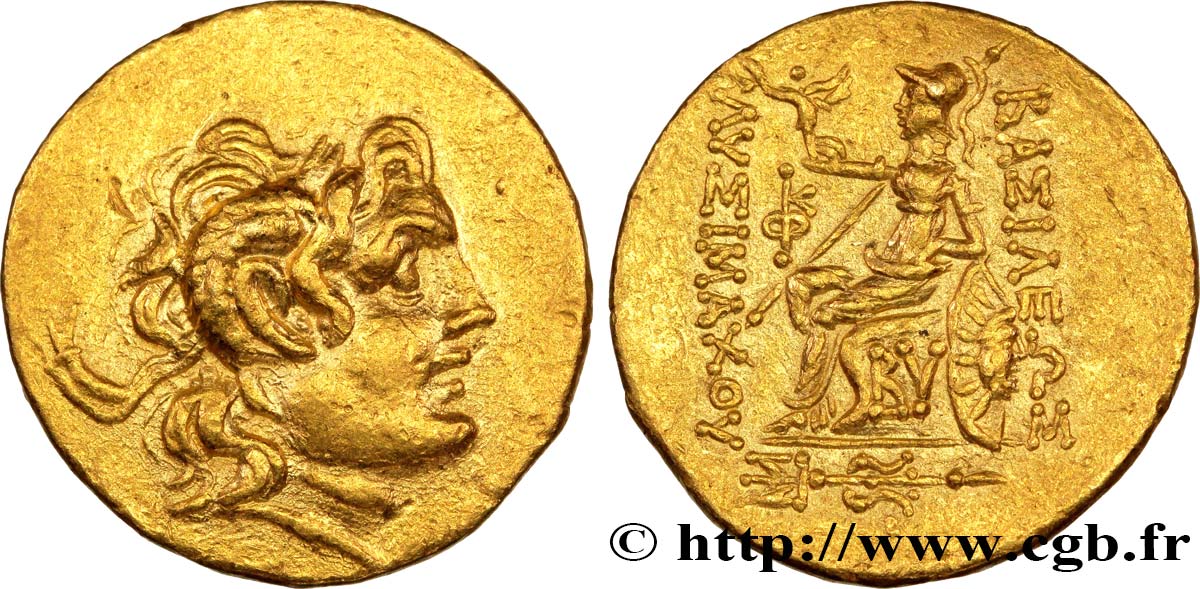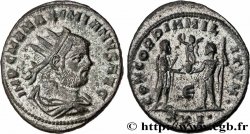Live auction - bgr_349702 - THRACE - BYZANTION Statère d’or
You must signin and be an approved bidder to bid, LOGIN TO BID. Accounts are subject to approval and the approval process takes place within 48 hours. Do not wait until the day a sale closes to register. Clicking on "BID" constitutes acceptance of the terms of use of cgb.fr private live auctions.
Bids must be placed in whole Euro amounts only. The sale will start closing at the time stated on the item description; any bids received at the site after the closing time will not be executed. Transmission times may vary and bids could be rejected if you wait until the last second. For further information check the Live auction FAQ
All winning bids are subject to a 18% buyer’s fee.
All winning bids are subject to a 18% buyer’s fee.
| Estimate : | 4 500 € |
| Price : | 3 700 € |
| Maximum bid : | 3 700 € |
| End of the sale : | 31 March 2015 14:02:00 |
| bidders : | 2 bidders |
Type : Statère d’or
Date: c. 150 AC.
Mint name / Town : Thrace, Byzance
Metal : gold
Millesimal fineness : 1000 ‰
Diameter : 21 mm
Orientation dies : 12 h.
Weight : 8,36 g.
Rarity : R2
Coments on the condition:
Exemplaire de qualité exceptionnelle pour ce type de monnayage sur un flan ovale et très large, parfaitement centré des deux côtés. Portrait fantastique de très haut relief, bien venu à la frappe, légèrement stylisé. Merveilleux revers, finement détaillé. Jolie patine de collection. Conserve l’intégralité de son brillant de frappe et de son coupant d’origine
Catalogue references :
Predigree :
Cet exemplaire provient de la vente CNG. (Internet) 324, n° 8
Obverse
Obverse legend : ANÉPIGRAPHE.
Obverse description : Tête imberbe d'Alexandre le Grand sous les traits de Zeus-Ammon, cornu et diadémé à droite.
Reverse
Reverse description : Athéna nicéphore assise à gauche sur un trône, tenant une petite Niké de la main droite qui couronne le nom de Lysimaque et le coude gauche reposant sur un bouclier orné d'un masque de lion ; dans le champ à gauche, un monogramme, un autre sur le trône ; un trident tourné à gauche à l’exergue orné de deux minuscules dauphins.
Reverse legend : BASILEWS/ LUSIMCOU/ BU/ (KF)
Reverse translation : (du roi Lysimaque).
Commentary
Nous n’avons pas de liaison de coin pertinente pour ce type de monnayage. Ce type ressemble tout à fait à ceux que l’on rencontre entre 100 et 72 pour les ateliers de la Mer Noire et qui ont servi a financer Mithridates VI du Pont dans la région.
We do not have a relevant die link for this type of coinage. This type is very similar to those found between 100 and 72 for the Black Sea mints and which were used to finance Mithridates VI of Pontus in the region.
We do not have a relevant die link for this type of coinage. This type is very similar to those found between 100 and 72 for the Black Sea mints and which were used to finance Mithridates VI of Pontus in the region.








 Report a mistake
Report a mistake Print the page
Print the page Share my selection
Share my selection Ask a question
Ask a question Consign / sell
Consign / sell






